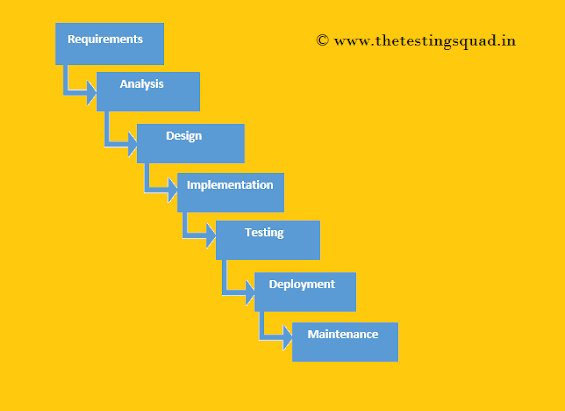Waterfall Model in Software Development:
The Waterfall Model is a traditional and linear software development model in which development is divided into distinct stages, and each stage must be completed before the next one can begin. The stages of the Waterfall model include:
- Requirements gathering and analysis: This stage involves gathering and documenting the requirements for the software.
- Design: This stage involves creating a detailed design of the software, including system architecture, data structures, and interfaces.
- Implementation: This stage involves writing the code for the software.
- Testing: This stage involves testing the software to ensure that it meets the requirements and does not contain any bugs.
- Deployment: This stage involves deploying the software to the production environment.
- Maintenance: This stage involves maintaining and updating the software after it has been deployed.
Advantages and Disadvantages of Waterfall Model:
Advantages of the Waterfall Model:
- Easy to understand and implement: The Waterfall model is a straightforward and linear approach to software development, making it easy for team members to understand and follow.
- Good for projects with well-defined and fixed requirements: The Waterfall model is well-suited for projects with well-defined and fixed requirements, as each stage of development is completed before the next one begins.
- Clear milestones and deliverables: The Waterfall model clearly defines the milestones and deliverables for each stage of development, making it easy to measure progress and identify any issues that need to be addressed.
- Easy to manage and control: The Waterfall model is easy to manage and control, as each stage of development has specific deliverables and a clear start and end point.
Disadvantages of the Waterfall Model:
- Lack of flexibility: The Waterfall model does not allow for changes to the requirements once development has begun, which can lead to a lack of flexibility and high costs if changes are required.
- No feedback: The Waterfall model does not provide opportunities for feedback during the development process, which can lead to a lack of customer involvement and a higher risk of developing software that does not meet the customer's needs.
- No testing until the end: Testing is only done at the end of the development process, which could lead to high costs if bugs are found late in the development cycle.
- Difficulty to adapt to change: It is difficult to adapt to changes in the project, since the model follows a linear sequence and it is hard to incorporate changes once a stage is completed.
- Not suitable for complex and large projects: The Waterfall model is not well-suited for complex and large projects, as it does not allow for incremental delivery of the software.


Post a Comment